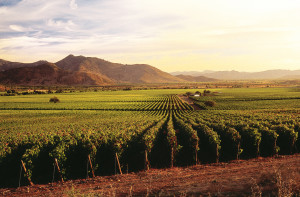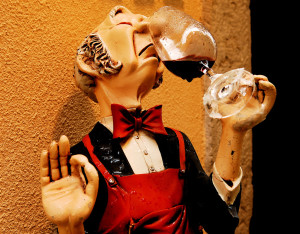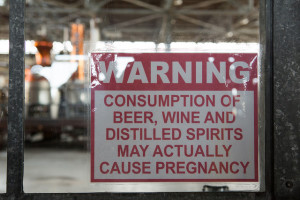It’s very difficult, if not impossible, for one single person to thoroughly review every single piece of peer reviewed literature related to wine that is published every day. This Wine Literature Review Lightning Round series presents three new papers (within the past year or two) in one post by briefly summarizing the research and linking to the abstract in order for you to pursue further if you’re interested. If there is enough reader interest, I can review any of the papers introduced to you in this post in a more critical assessment.
VITICULTURE & ENOLOGY
“The combined impact of vineyard origin and processing winery on elemental profile of red wines”, published in April 2015 in the journal Food Chemistry, aimed to examine the breakdown of elements within a wine to determine if they could determine not only what vineyard or region the wine came from, but also what winery in which that particular wine was made.
Determining the origin of wines is important for many reasons, with a major focus being on fine wines and collectible wines. With the number of fakes on the market, it’s important to have a method to be able to determine the authenticity of a wine, and this study aimed to

Photo courtesy Flickr user Viña Caliterra
determine if they could determine where the wine came from, both vineyard and winery, using its elemental profile.
Brief Methods: The study looked at 65 red wine samples from 5 California vineyards (all within 40 miles of each other). Using a technique called inductively coupled plasma mass spectrometry (ICP-MS), the researchers determined the elemental make up of each individual wine sample. They then compared these profiles with the specific vineyard and winery in which the grapes were grown and the wines were made. The researchers also made note of the specific winemaking techniques used at each individual winery.
Brief Results: What they found was that overall, the vineyard location and the individual winery location both changed the elemental profile of the wine, though the degree by which depended upon the particular vineyard/winery. Interestingly, some of the vineyards showed the same elemental profile in the wines regardless of what winery they were made in, while a similar result was also found for certain wineries (i.e. for some wineries, the elemental profile of the wines was the same regardless of what vineyard they came from).
While these results are somewhat confusing, they do suggest that one can determine the origin of a given wine using the elemental profile, though more research is needed to determine exactly how vineyard and winery influences alter that profile and by how much.
SENSORY MATTERS
“A sensory study of the ageing bouquet of red Bordeaux wines: A three-step approach for exploring a complex olfactory concept”, published in June of 2015 in the journal Food Quality and Preference, aimed to closely evaluate the ageing process of red Bordeaux wines in terms of their sensory changes, by specifically looking at how wine experts actually taste and perceive the olfactory changes and how they translate what they taste into primary sensory characteristics. The study hoped to determine if there was a consensus on the characteristics of the ageing bouquet of red Bordeaux wines.

Photo courtesy Flickr user Pedro Ribeiro Simões
Brief Methods: The first part of this study involved a lengthy questionnaire on the concept of wine ageing and how this affects the bouquet of the wine specifically. 144 wine experts were offered the survey, which focused on determining their own personal definition of the olfactory characteristics of the ageing bouquet of red Bordeaux wines.
The second part of this study involved a tasting of 30 red Bordeaux wines by 13 wine experts. Panelists were asked to taste the wines and score whether or not they thought it represented an ageing bouquet and to what degree. Then, they were asked to freely write about what flavors and aromas they were getting in the bouquet of those wines.
Brief Results: For the first part of the study (the questionnaire), it was found that there was a wide variety of characteristics identified by the wine experts as being involved with the ageing bouquet of red Bordeaux wines. Specific sensory characteristics, perceived complexity, and balance all seemed to play a significant role in the overall concept of the ageing bouquet by the wine experts. Interestingly, some of the wine experts appeared to have some confusion over ageing bouquet sensory characteristics versus reductive wine fault characteristics, and sometimes indicated a fault when there was none present.
For the second part of the study (the tasting), it was found that while the experts were not in complete agreement over which wines were more aged than others, as a whole they were able to identify very similar olfactory characteristics of an aged bouquet from a red Bordeaux. Characteristics included undergrowth, truffle, toasted, spicy, liquorice, mint, red fruits, and blackberry.
The results of this study provide some interesting insights into the development of the ageing bouquet of red Bordeaux and opens the door for future study on the topic.
HEALTH
“’My midwife said that having a glass of red wine was actually better for the baby’: a focus group study of women and their partner’s knowledge and experiences relating to alcohol consumption in pregnancy”, published in April of 2015 in the journal BMC Pregnancy & Childbirth, aimed to determine what information was being told to pregnant women and their partners regarding alcohol consumption in pregnancy. Since it is well known that alcohol crossing the placenta and reaches the fetus, the fact that there is conflicting information out there as far as how much is OK to drink led the researchers to ask pregnant women what they are actually being told.
Brief Methods: 5 focus groups interviewing 21 people total (17 women) were put together for this study. In these group interviews, women and their partners were asked about their knowledge of the effects of alcohol consumed during pregnancy, where they got this information, and how this information has affected them from a psychological perspective.
Brief Results: Overall, the results of these focus group interviews indicated that participants seemed to know that they weren’t supposed to drink alcohol during pregnancy, but they didn’t really know why nor did they know the full effects alcohol has

Photo courtesy Flickr user Scott Schiller
on pregnancy and the developing fetus. Specifically, the participants didn’t have a clear sense of how much, if any, alcohol is safe, and expressed a lot of confusion on the topic.
From these focus groups, the researchers recommended a more comprehensive program for pregnant women and their partners, to help educate them better on the effects of alcohol consumption during pregnancy. (Side note: I suppose it’s hard to do this when even the experts seem to disagree, but providing women with as much evidence as possible so they can make the best decisions with their healthcare providers would be beneficial).
